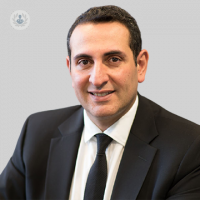How labiaplasty is performed
Escrito por:Cosmetic surgery on the genitals can be a controversial, even taboo topic. However, for many people, it may be essential to improving quality of life, or even medically necessary. Many people have a lot of questions about procedures like labiaplasty; perhaps you have never even heard of it. What is labiaplasty? How is it performed, and why? Expert cosmetic gynaecologist Dr Alexander Bader is here to clear up the confusion:
What is a labiaplasty?
Labiaplasty is a surgical procedure that we perform for those patients who are interested in reducing the size or to correct the asymmetrical shape of their labia minora. It can be part of a full vaginoplasty, or a single procedure in its own right.
Labiaplasty: why is it done?
Labiaplasty is performed on many of these patients because they are really bothered by the shape or size of this intimate area. Many are actually bothered for functional reasons, while others have aesthetic reasons, being concerned about the appearance of their labia. These patients are willing to consider reducing this extra tissue from their body in order to enhance both function and appearance of this intimate area of their body.
What to expect from a labiaplasty – how is it performed?
Labiaplasty is a surgical procedure; not a simple procedure that we perform in the doctor’s office. It needs to be done in an operating theatre under anaesthesia with a proper surgical set-up, complete with sterilization and proper nursing.
When we do labiaplasty, we, as surgeons, use different types of tools and surgical instruments to perform the surgery. The most popular and conventional type of tools are scalpels and surgical scissors. But nowadays, as you can understand, the technology has been improved and instead of using scissors and blades, we can now use much more advanced tools, such as laser and radiofrequency devices. With these devices, we perform this procedure much faster, much safer, and with much better aesthetic and functional results for the patients.
How long is the procedure?
How long a procedure takes usually depends on the case. Each patient is different and the things that this procedure might require from the surgeon may differ from patient to patient. If we’re talking about the surgical time of the procedure, it takes between 45 minutes to one hour on average. If you add the preparation of the patient, the marking of the patient, and the recovery of the patient, it usually takes around one hour and a half.
Labiaplasty itself is a procedure that we conduct as a day case, so we don’t ask the patient to stay overnight. When a patient is interested in having a labiaplasty, the full time needed to be spent in the hospital is around four to five hours – this includes coming to the hospital, preparation for the procedure, the procedure itself, recovering, and going back home.
How long does it take to heal after a labiaplasty?
The healing process is also highly dependent on the structure and quality of the patient’s labia tissues. On average, the healing process will take somewhere between three and four weeks, but there are patients who will take a bit longer - maybe five weeks – and of course, there are patients who will heal much faster, so they may only take two to three weeks to heal.
With modern technologies – lasers, radiofrequency, etc. – and also using a new technique called PRP, we can speed up this healing process and make it much shorter compared to the old, traditional method of performing a labiaplasty.
If you think you may need, or want a labiaplasty, you should first seek the advice of your doctor or a specialist, who will advise you on the best options for you.



